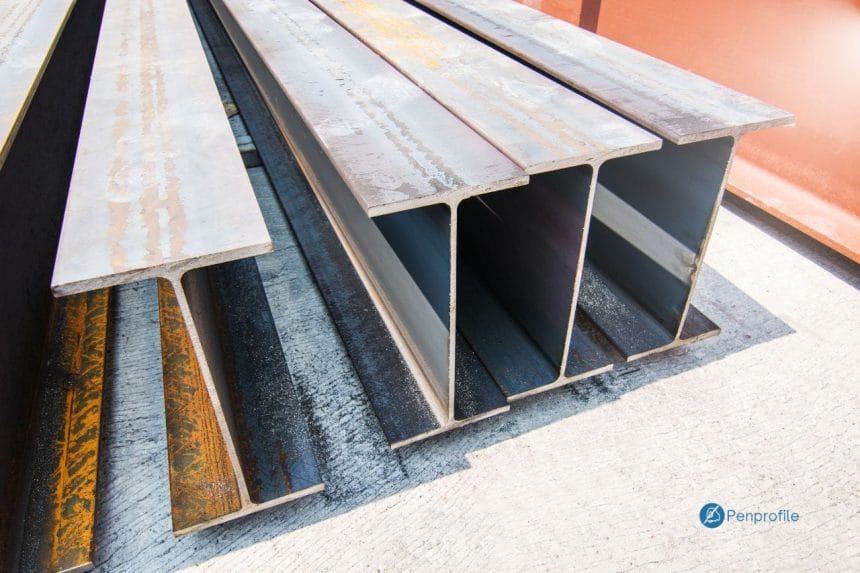Stress and Strain are two fundamental concepts that are paramount for anyone studying Engineering, construction, or anything that has to do with the analyses of the mechanical behaviors of materials. Stress and strain provide a description for the internal forces that are within a material and how that material deforms under those forces.
Stress and strain are rather complex topics, but this article will provide you with a simplified and easily digestible understanding of stress and strain. The article will cover definitions, the relationship between stress and strain, formulas, as well as provide you with example problems to be solved with knowledge gained from within the article.
Stress
By definition, stress is the summation of internal force per unit area within a material. When a material is subjected to an external force or load, internal forces automatically form to resist that external force or load. In turn, these internal forces cause stress, which can be quantified and calculated by the formula:
\[ \text{Stress} (\sigma) = \frac{\text{Force} (F)}{\text{Area} (A)} \]
The unit for stress is pascals (Pa), where 1 pascal is equated to 1 newton per square meter \(N/m^2\). Stress is typically categorized into three main types, which are the following:
- Tensile Stress: This is the type of stress whereby forces acting on a material act to stretch it. Tensile stress is experienced by a material that has a pulling force acting upon it. An example of tensile stress can be stretching a rubber band.
- Compressive Stress: Compressive stress is a type of stress that only occurs when the forces acting on a material are acting to compress or shorten it. It is the type of stress that is experienced by a material that is subjected to a pushing force. Squeezing a sponge is an example of compressive stress.
- Shear Stress: This type of stress happens when forces act parallel or tangential to the surface of a material. This will result in the layers of the material sliding along each other. The stress that occurs when cutting paper with scissors can be seen as one example of shear stress.
The above-mentioned types of stress are the most basic, but can be broken down and combined, leading to more complex states of stress such as bending stress, torsional stress, and more.
Strain
Strain is defined as the measurement of the deformation which is representing the displacement between particles in a material. Unlike stress, strain is actually dimensionless, often identified as a percentage or in decimal form. The formula for strain is as follows:
\[ \text{Strain} (\varepsilon) = \frac{\text{Change in Length} (\Delta L)}{\text{Original Length} (L_0)} \]
Just like stress, strain is also categorized into 3 significant groupings which are as follows:
- Tensile Strain: This stress is associated to tensile stress. As such, it occurs when a material is stretched or elongated.
- Compressive Strain: This stress is related to compressive stress and so will occur as a material is subjected to a force, making it compress or shorten.
- Shear Strain: It is associated with shear stress, leading to a change in shape without changing the volume of a material.
Relationship between stress and strain
Stress and strain are interconnected topics. Studying stress without also understanding how it relates to strain will not paint a full picture of either topics, you need both. The relationship between stress and strain in any material is given by Hooke’s Law, which states that for any given material, the stress will be directly proportional to the strain within the materials’ elastic limit. What is meant by elastic limit is the amount of internal and external force that a material can withstand before a permanent deformation. Mathematically, Hooke’s Law is expressed as:
\(F = -k \times x\)
Which can then be derived to express the relationship between stress and strain. It is expressed by the following:
\[ \sigma = E \cdot \varepsilon \]
Where:
- \(\sigma\): is the stress (Pa).
- \(E\): stands for Young’s modulus also known as the modulus of elasticity, a constant that denotes a materials stiffness.
- \(\varepsilon\): This is the strain (Pa).
Stress and Strain problems:
Now that we have fully understood what stress and strain are and how they relate to each other, I believe we are ready to solve some problems.
Stress Example Problem:
A steel rod has a cross-sectional area of 0.01 \(m^2\) and is subjected to a force of 10,000 N. Calculate the stress experienced by the rod.
Solution:
First we need to identify what our given values are. From the problem above, we know that the area and force are given as:
- Force: \( F = 10,000 \) N
- Area: \( A = 0.01 m^2\)
Using the formula below, we can solve to find for stress.
\[ \sigma = \frac{F}{A} \]
Plugging in the values, the formula then becomes:
\[ \sigma = \frac{10,000 \text{ N}}{0.01 \text{ m}^2} = 1,000,000 \text{ Pa} \]
Entering the values above into a calculator will reveal our answer.
And so, the stress that will be experienced by the steal rod will be 1,000,000 (Pa).
Strain Example Problem:
A copper wire is stretched until it measures to 2.005 meters. The original length of the wire is 2 meters. Calculate the strain in the wire.
Solution:
As always, let us start by identifying what our given values are from the problem above.
- Original length: \( L_0 = 2 \) m
- Final length: \( L_f = 2.005 \) m
Before we solve the problem, we first need to identify what the change in length of the copper wire is. We can do this using the givens in the problem.
\[ \Delta L = L_f – L_0 = 2.005 \text{ m} – 2 \text{ m} = 0.005 \text{ m} \]
Using the strain formula below, we can then solve the problem.
\[ \varepsilon = \frac{\Delta L}{L_0} \]
Putting in everything into the formula, we can then determine the strain experienced by the copper wire.
\[ \varepsilon = \frac{0.005 \text{ m}}{2 \text{ m}} = 0.0025 \]
We can now determine that the strain experienced by the copper wire is 0.0025 or 0.25%.
Hooke’s Law Example Problem:
A steel rod with a Young’s modulus of 200 GPa with a cross-sectional area of 0.01 \(m^2\) is subjected to a force of 10,000N. Calculate the strain experienced by the rod.
The givens in this formula are the following:
NOTE: Make sure every measure is in its SI unit.
- Force: \( F = 10,000 \) N
- Area: \( A = 0.01 m^2\)
- Young’s modulus: \( E = 200 \) GPa \( = 200 \times 10^9 \) Pa
The first thing to do in this problem is to solve for the stress given the values in the problem.
\[ \sigma = \frac{F}{A} = \frac{10,000 \text{ N}}{0.01 \text{ m}^2} = 1,000,000 \text{ Pa} \]
Now we can solve the problem using Hook’s law given as:
\[ \sigma = E \cdot \varepsilon \]
Plugging in everything into the formula, we now have:
\[ \varepsilon = \frac{\sigma}{E} = \frac{1,000,000 \text{ Pa}}{200 \times 10^9 \text{ Pa}} = 5 \times 10^{-6} \]
The strain experienced by the steel rod is \( 5 \times 10^{-6} \) or 0.0005%.
After solving the problems above, I believe we can now say that we fully understand Stress and Strain. At least the basics. By using the fundamental formulas and relations, we can now calculate the stress, strain, and any other related properties of materials. This knowledge will aid in Engineering, construction, and any other field related to having a thorough understanding of materials.













